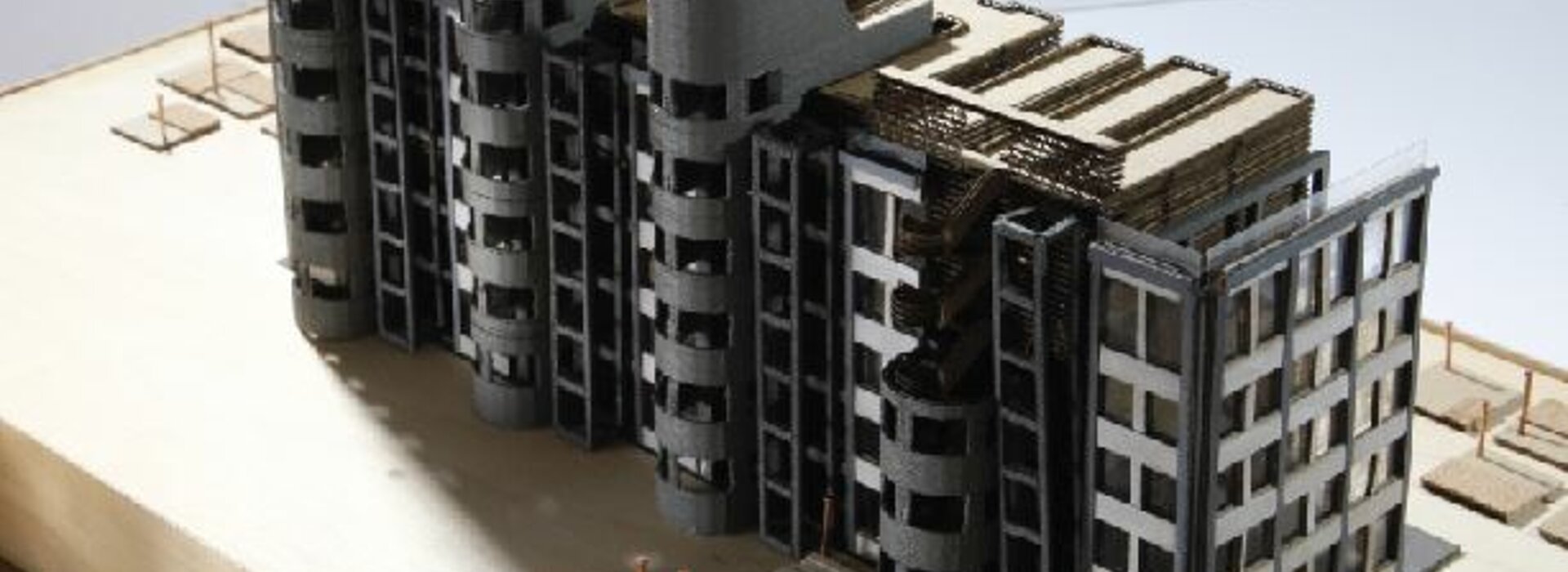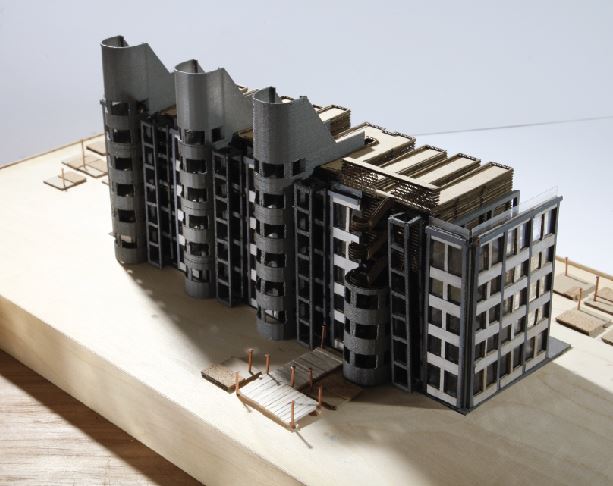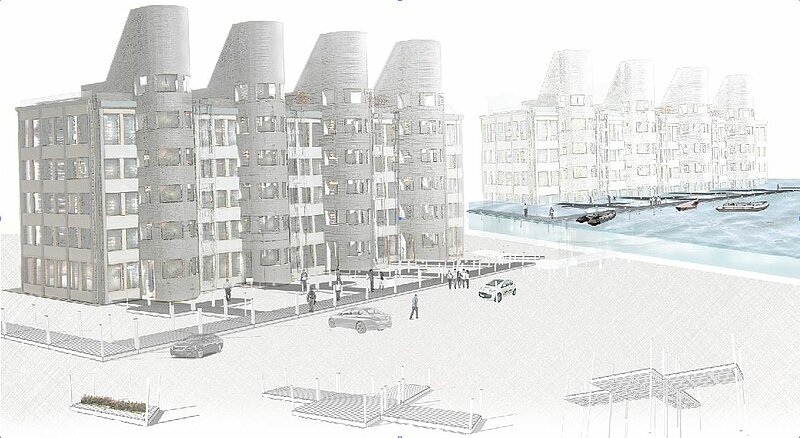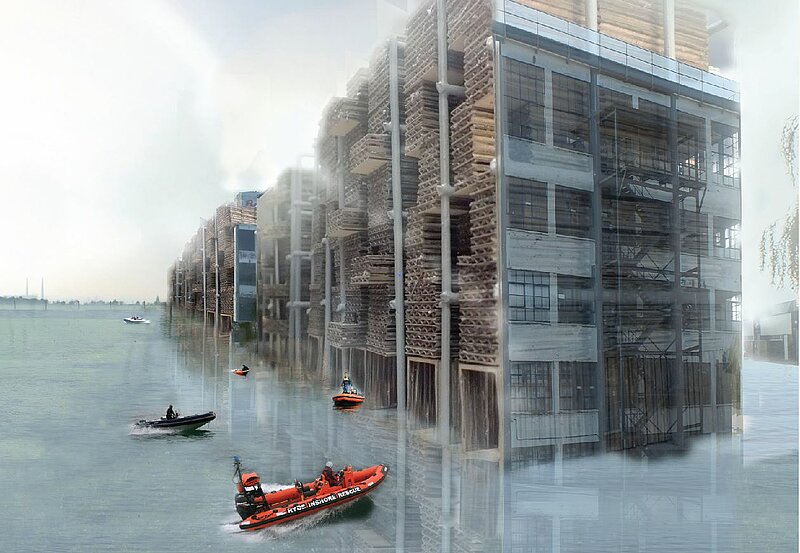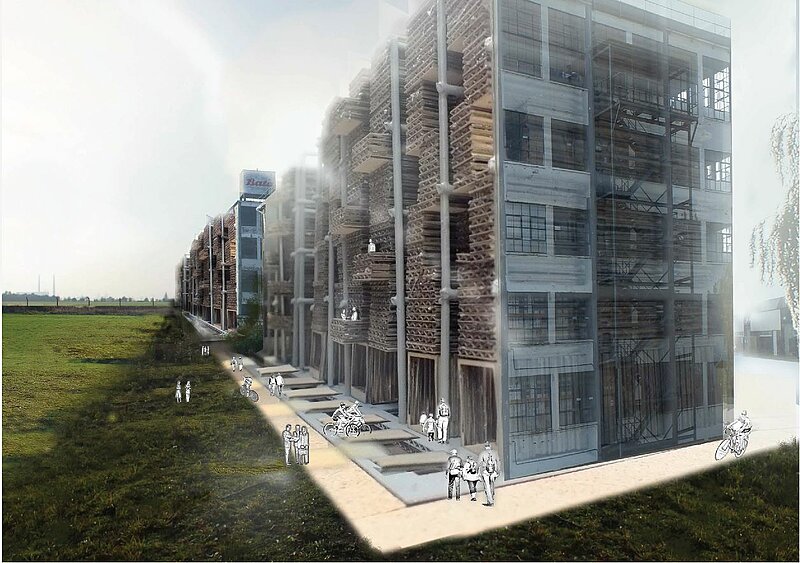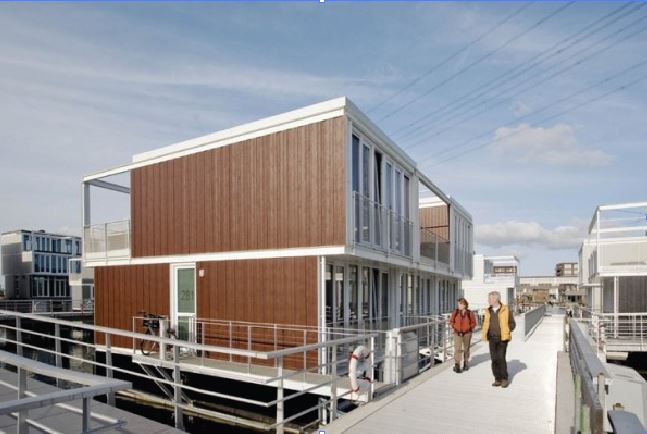A ship aground Creating a floating future
- Year2014
- LocationOcean
Flood levels are rising at an ever increasing rate. Current predictions could see sea levels rise by as much as 1 meter by 2100 due to thermal expansion and the melting of glacial ice.
With the UKs extensive coastline under threat, “A Ship Aground” proposes a managed acceptance of the flood water. This is achieved by creating a dynamic architecture, which can float in the event of a flood, but remains in contact with the ground and surroundings in normal circumstances. This could be a model for all sites situated on a floodplain, not only in the UK but globally.
The site of focus for the project is East Tilbury, a small village set in an estuarine landscape on the North bank of the Thames Estuary. A modernist style factory complex and town built in the 1930s by the Bata Shoe Company brought in workers, and East Tilbury grew. However, the Bata industrial estate closed and is now disused and in need of restoration.
The ecological use of timber as a construction material helps to lock away C02 in a world which is becoming increasingly polluted. The project also pushes the boundaries of timber construction, and proposes the tallest timber framed building in the world.
By using an existing disused structure, we reduce the wastage of resources and materials. The constructional system could also be used in new builds, to populate areas of potential flood, where houses couldn't previously have been built. In the years to come these would become floating communities, creating a new coastal landscape around the world.
